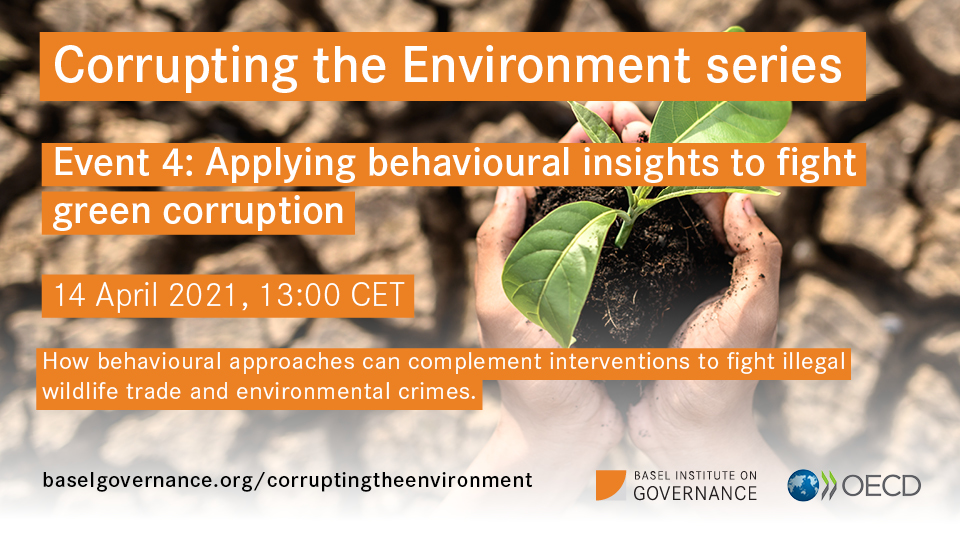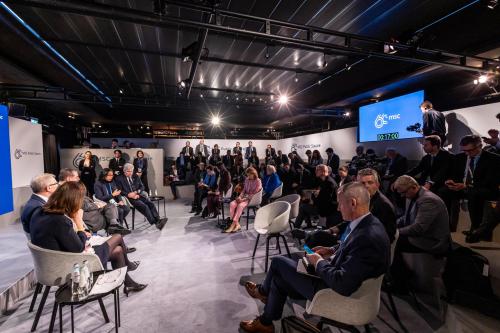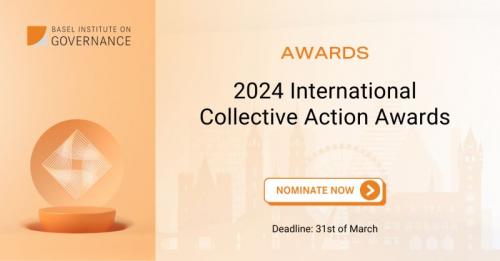Why do people poach, trade and buy protected wildlife – and what might change that behaviour?

The fourth event of the Corrupting the Environment webinar series co-hosted by the Basel Institute and the OECD focused on how behavioural approaches can and must complement interventions tackling illegal wildlife trade (IWT) and other environment crimes.
The panel comprised voices from practitioners, activists and policymakers, reflecting the variety of actors involved in fighting IWT. The panel’s moderator was Dr. Frédéric Boehm, Economist/Policy Analyst at the OECD. Gayle Burgess, Behavioural Change Programme Leader at TRAFFIC, Alex Ngabirano, Founder and Director of the Bwindi Development Network in Uganda, and Dr. Saba Kassa, Public Governance Specialist at the Basel Institute on Governance, participated as speakers.
Behaviour change approaches: a promising tool to fight green corruption?
Conservationists and anti-corruption practitioners are realising the power of applying insights from social and behavioural change theory when designing anti-IWT interventions. One of the ideas is that by influencing the social norms of target consumer groups, e.g. buyers of wildlife used for medicine, it is possible to trigger positive alternative behaviours which directly reduce the volume of IWT.
Gayle Burgess of TRAFFIC summarised the three different strategic approaches often found in behavioural change interventions:
- Advocacy: efforts aimed at changing the regulatory framework around IWT
- Social mobilisation: influencing the social norms surrounding IWT and that affect people’s perceptions of the issues and ethical norms
- Behaviour change communication aimed at switching a negative behaviour to a desirable one in conservation and wildlife management
The INTEGRITY framework was developed as a memory aid for conservation practitioners to ensure they consider a behavioural change component when designing anti-corruption interventions.
It’s absolutely not about following a checklist, though. Before applying behavioural approaches, practitioners should carefully analyse the context and map the relevant actors. If, for instance, corruption is related to structural economic factors – like low wages for public officials – then behavioural insights may not change the target behaviour (e.g. accepting bribes) because the underlying driver of corruption is not addressed.
Hence, behavioural interventions are most effective when a previous in-depth context analysis has taken place and when part of a holistic approach.
Bwindi Development Network – a success story?
Alex Ngabirano is the founder and director of the Bwindi Reformed Poachers project in Uganda, which aims to reform traditional poachers and help them transition into sustainable livelihood activities. Drawing on more than 20 years’ experience working to protect mountain gorillas and support Bwindi National Park’s frontline communities in Uganda, Alex works with former poachers who accepted to abandon their hunting tools to form their own association and participate in community projects. Some are directly involved in conservation activities; others lead tourist groups in the natural park. The revenue generated by these activities is reinvested in community education and development.
From a behavioural insights perspective, former poachers promoting the messages to refrain from poaching is a very effective approach to change the norms and values around IWT within their community. For example, by highlighting the collective distress caused by poaching activities, reformed poachers can address the underlying motivation to engage in IWT.
The hope is that this successful model can be replicated in other national parks in Uganda, especially since the increasing price of IWT driven by higher global demand is fuelling more poaching in the country. Conservationists in other countries fighting rampant poaching and trafficking of wild animals would do well to consider this option.
What do behavioural change interventions in China, Vietnam and Uganda teach us?
Gayle Burgess shared key findings from TRAFFIC’s work using behavioural approaches to influence consumer demand in IWT in China and Vietnam.
In China, TRAFFIC worked with fifth-generation ivory carvers to re-purpose their skills using sustainable alternative materials. Results from evaluation surveys indicate that 30% to 40% of the workforce has adopted the desired behaviour and is now adopting sustainable materials.
In Vietnam, TRAFFIC’s survey suggested that illegal rhino horn was connected to prestige and status, mostly in the business community. So, TRAFFIC carried out an extensive communication campaign to change behaviours employing the Vietnamese concept of Chi or strength of will. This reminded consumers that success and strength come from within and not from part of an endangered animal from a faraway land, shifting behaviours away from IWT use.
What about behaviour at the other end of the supply chain, in source locations? Saba Kassa talked about the research on the drivers of wildlife trafficking that the Basel Institute has carried out in Uganda under a project funded by PMI Impact. What emerged is that socio-economic drivers such as poverty and social pressure are compounded by strong narratives that legitimise engaging in the early stages of IWT, making it socially acceptable to accept bribes or not enforce regulations.
The research highlighted the importance of looking at people’s internal motivations and barriers to change behaviour while not losing sight of the socio-economic background and context conditions in which the intervention takes place.
So, behavioural change approaches are needed to change narratives, stereotypes and social norms that make engaging with IWT acceptable. These interventions also reinforce the importance of understanding the political economy, actors and power relations of the context where the intervention will take place. A holistic approach, engaging local communities and understanding the interplay of narratives and structural drivers of corruption, are some of the elements anyone designing an intervention and wanting it to be successful should consider.
What can we do to support behavioural research and practice in IWT interventions?
We know that corruption facilitates IWT, but we don’t know exactly how, where or to what extent. In order to save the world’s last remaining endangered species from being butchered and transported across the oceans, we need more evidence. Perhaps we’re overstating the role of corruption as a major driver of IWT? Or perhaps smart anti-corruption interventions can cut a crucial link in the trafficking chain.
Smarter monitoring and evaluation of counter-IWT interventions is one way to better understand the dynamics of corruption in a specific context, its biggest risks and its consequences for tackling IWT. The Basel Institute’s Green Corruption programme is working with the Tackling Natural Resource Corruption (TNRC) project to explore five crucial areas where corruption intersects with environmental crimes, including one joint component on behavioural interventions in collaboration with TRAFFIC.
And as Alex Ngabirano emphasised, community education remains essential in combating IWT sustainably by empowering future generations.
Learn more
- View the full webinar on YouTube.
- Learn more about the Green Corruption programme and Corrupting the Environment event series.
- Read about another recent webinar on behavioural insights to tackle corruption in a crisis, hosted by the Basel Institute's Public Governance team as Knowledge Partner at the 2021 OECD Global Anti-Corruption & Integrity Forum.




